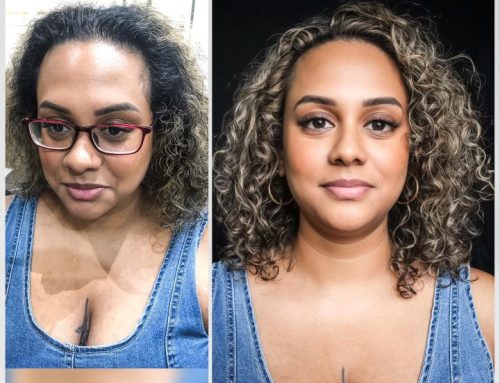The Confession Nobody Warns You About
Six weeks after getting hair extensions in Singapore, most women don’t regret the price.
They regret the silence—the questions they didn’t ask, the care they didn’t realize they’d need, and the tiny daily habits that quietly dull a $2,000 investment.
It’s not buyer’s remorse. It’s what stylists privately call the six-week slump: the moment when dream hair starts behaving like real hair—and clients panic.
This isn’t a story about damage or disaster. It’s a guide to understanding what actually changes between week one and week six, and how to keep your extensions looking expensive instead of exhausted.
1 | Week One: The Honeymoon Glow
You leave the salon euphoric.
Every photo looks editorial. Every breeze feels cinematic. You finally understand the phrase “good-hair energy.”
Extensions, when freshly installed, have what colorists call mirror tension: the combination of gloss, density, and movement that makes hair look impossibly healthy.
But the first week is also when the foundation for longevity is built—or accidentally broken.
The hidden mistake
Sleeping without protection.
Tossing extensions against cotton pillowcases roughens cuticles and begins micro-tangling at the bonds. It’s invisible for now, but it’s the seed of every future complaint.
The six-week fix
-
Switch to silk or satin pillowcases.
-
Braid loosely before bed.
-
Apply a pea-sized amount of leave-in conditioner on mid-lengths only—never at the bonds.
Small habits here separate six-month glam from six-week gloom.
2 | Week Two to Three: Real Life, Real Friction
You wash, style, tie up, and sweat.
The novelty fades; maintenance begins.
This is when stylists start seeing the most expensive mistake of all: treating extensions like natural hair.
Why it happens
Clients assume professional hair can handle professional wear. But once hair is separated from the scalp, it loses the natural oils that protect and plasticize it.
Over-washing, aggressive brushing, or heat beyond 200 °C (392 °F) dehydrates the strands and melts cuticle alignment.
Visible signs
-
Ends feel coarse by Week 3.
-
Bonds begin to squeak or slip.
-
Shine turns matte in humidity.
Professional insight
Trichologists describe this as cuticle dehydration—the surface scales lift, light scatters unevenly, and the hair appears dull even if clean.
The remedy
Hydration layering:
-
Moisture shampoo (low pH ≈ 5.5)
-
Lightweight conditioner, mid-lengths down
-
Once-weekly mask or bond-builder
-
Cool rinse to reseal
This simple protocol can extend extension lifespan by 40–60 percent, according to salon maintenance studies.
3 | Week Four: The Tone Shift
Even the best hair oxidizes.
UV exposure, styling heat, and city minerals shift blonde toward gold, brunette toward red, and ash toward “why is this orange?”
The psychological trap
Clients misread tone change as product failure. Stylists know it’s oxidation, not neglect.
Science snapshot
Sunlight breaks down pigment molecules and photo-oxidizes trace metals inside the strand. In humid climates, that reaction doubles because moisture acts as a catalyst.
The expensive mistake
Re-toning at home with purple or blue shampoo—too often, too long. These pigments stain extension hair unevenly, leaving lavender streaks.
The elegant fix
Schedule a mini-gloss between weeks 5–7.
A 15-minute acidic topcoat restores tone, closes cuticles, and adds slip without affecting bonds. Think of it as your hair’s top-up facial.
4 | Week Five: The Bond Reality Check
By now, your natural hair has grown roughly 6–8 mm.
Weight distribution shifts; tension at the root changes.
If ignored
-
Bonds begin to pivot and tangle.
-
Tape tabs fold.
-
You feel mild pulling at night.
The expensive mistake
Waiting until something feels wrong.
Stylists compare it to dental hygiene: you book cleaning before pain.
Professional schedule
-
Keratin/fusion bonds: check-in every 8–10 weeks
-
Tapes: maintenance every 6–8 weeks
-
Wefts/nano links: reposition every 6–10 weeks
Failing to maintain on time doesn’t just risk slippage; it stresses your natural roots, shortening your extension future.
5 | Week Six: The Emotional Slump
Here it is—the point of collective regret.
Clients look in the mirror and see frizz, fuzz, and fatigue where effortless glamour once lived.
The common reaction: “Did my hair suddenly stop being expensive?”
Why it happens
Not because of product failure—but because your eyes acclimate.
Neuroscientists call it perceptual adaptation: the brain normalizes beauty it sees daily. You stop noticing your own transformation, and only see flaws.
The stylist’s solution
Recreate novelty:
-
Add a face-framing ribbon of brightness.
-
Gloss the mid-shaft for glass-like shine.
-
Re-style into a new shape (soft layers, curtain fringe).
A tiny visual change reignites appreciation—and reminds clients why they loved their hair in the first place.
6 | The Maintenance Myth That Costs the Most
Many first-time clients assume “professional” means “indestructible.”
In truth, luxury extensions behave like couture fabric—delicate, durable only with care.
The real “most expensive” mistake isn’t over-brushing, over-toning, or over-heating.
It’s under-planning.
The hidden cost breakdown
| Habit Missed | Average Monetary Loss (per 3 months) | Emotional Impact |
| Skipping mid-term gloss | $120–150 | Colour dulls → “my hair looks tired” |
| No maintenance visit | $200–400 | Bond slippage → panic, re-fit cost |
| Wrong shampoo (pH > 7) | $50–80 | Dryness → frizz, matting |
| Sleeping without protection | $30–100 in tangling repairs | Morning frustration |
The “cheap month” often becomes the most expensive month when corrective work piles up.
7 | Humidity: The Silent Saboteur
In tropical climates, moisture attacks adhesion and cuticle smoothness.
Professional truth
-
Tape adhesives soften at prolonged humidity above 80 %.
-
Keratin bonds absorb water, swell, and then harden unevenly, causing micro-gaps.
-
Wefts fare best if blow-dried at the roots after every wash.
Your action plan
-
After showering, pat—not rub—at roots with a microfiber towel.
-
Apply anti-humidity spray (look for dimethicone copolyol, not heavy oils).
-
Finish with cool air to “set” the bonds.
Humidity can’t be avoided, but it can be managed scientifically.
8 | The Scalp You Forgot to Love
By week six, most clients focus entirely on extensions—and forget the scalp that supports them.
Dermatologists confirm that micro-inflammation from buildup (dry shampoo, sweat, environmental particles) can weaken root integrity.
Simple weekly detox
-
Use a scalp exfoliating serum with mild salicylic acid once per week.
-
Massage gently with fingertips—not nails—to stimulate circulation.
-
Rinse thoroughly; product residue is enemy #1 of healthy adhesion.
A clean scalp equals longer wear, fewer tangles, and happier natural hair.
9 | The Psychology of Maintenance: From Burden to Ritual
Luxury self-care fails when it feels like a chore.
Reframing maintenance as ritual changes everything.
Light candles, play music, make your wash day feel intentional.
In behavioral psychology, this is called ritual reward—linking small routines to emotional payoff.
When you associate care with calm, consistency follows naturally—and so does longevity.
10 | What Smart Clients Do Differently
-
They budget for upkeep, not just installation.
-
They book the next appointment before leaving the salon.
-
They learn to differentiate moisture vs. protein needs.
-
They photograph their hair weekly—progress tracking prevents panic.
-
They talk to their stylist early if something feels off; prevention is cheaper than correction.
These are the clients whose hair still looks “Day One” at Month Three.
11 | From Regret to Mastery
Every experienced extension wearer has a story about their first-timer missteps: brushing too roughly, skipping maintenance, trusting internet hacks.
But those lessons create the best clients—because mastery grows from mistake awareness.
The six-week slump isn’t failure; it’s feedback.
When you understand how hair ages, you stop reacting emotionally and start acting professionally about your own beauty.
12 | When to Call Your Stylist (and When to Relax)
Call if you notice:
-
Persistent itching or tightness
-
Bonds turning white or gummy
-
Matted sections at the nape
-
Sudden tone shift after swimming
Don’t panic over:
-
Slight shedding (100–150 strands per day is normal)
-
Mild warmth change from sun exposure
-
Softer texture after first washes
Real luxury isn’t perfection—it’s partnership with your stylist.
13 | The 6-Week Audit: Does Your Hair Still Feel Expensive?
Ask yourself:
-
Does it move when you move?
-
Does it still catch light from every angle?
-
Do you feel proud touching it—or careful?
If any answer wavers, it’s time for refresh, not regret.
14 | The Real Meaning of “Expensive Hair”
“Expensive” isn’t about cost per gram.
It’s how the hair behaves: reflective, soft, deliberate.
It’s also how you behave: consistent, informed, empowered.
After six weeks, the most valuable thing you can buy for your extensions is not more hair—it’s more knowledge.
15 | Final Thought: The Mistake Is Optional
Every first-time client will face Week Six.
Some will call it the regret point.
The wise ones call it the reset point—the moment they shift from passive wearer to active curator of their beauty.
That’s when the price you paid stops being an expense and becomes an investment—because it’s still paying confidence dividends every single day.
Professional References
-
American Academy of Dermatology (AAD): “Hair-care practices and damage prevention.”
-
International Journal of Cosmetic Science (2024): “Photochemical degradation of hair pigments.”
-
Trichology Research Journal (2023): “Effects of humidity on keratin-bonded hair.”
-
Cosmetic Chemists Association Education: “pH and cuticle integrity in processed hair.”








Leave A Comment